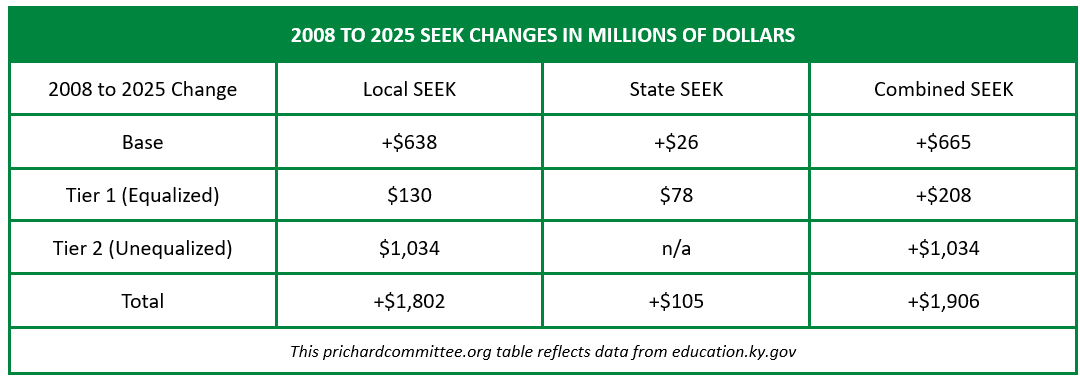Earlier today, Brigitte Blom’s statement on the 2023 Kentucky School Report Card noted progress on five of seven key measures, from kindergarten readiness to postsecondary readiness, along with a lack of growth in eighth grade reading and math. That’s a powerful starting snapshot of Kentucky’s K-12 challenges.
This post widens the lens, checking all tested subjects and grades. Overall, elementary grades showed growth with some results showing a big rise and others moving more slowly. The middle grades had far less change, and high school grades showed important losses in testing results along with a big step up in postsecondary readiness.
First, here’s a table of elementary results. The most impressive upward movement came in grade 5 science and writing (6 points each) with grade 3 math and grade 5 social studies also strong (5 points each). Only English mechanics stayed at 2022 levels. That said, even with this growth, Kentucky is currently below 50% on in the number of students meeting our benchmarks on every statewide elementary assessment. We have a lot of work ahead.

The middle school table shows less progress. There was exciting growth in writing, but math results were flat or declining in all three assessed grades, and grade 8 math results were also unchanged. Again, results were below 50% proficient on all measures.

In high school, there were some major disappointments, with four-point drops in both math and science. Social studies and writing had important improvement. As in the lower grades, all assessments showed proficiency below 50%.

Two more high school indicators deserve attention. The four-year graduation rate rose slightly, while the postsecondary readiness level rose by an important 7 points. In the coming days, it will definitely be worth puzzling over how the rising readiness number works with the declining math and science scores noted above.

Overall, this year’s results show us big statewide challenges.
I’m not surprised by that. Schools, students, and families have been hard by waves of disruptions, including changes wrought by digital access and social media, repeated shifts of public policy, declining buying power for public dollars, and all the challenges of a global pandemic.
The work of public education is about building our shared future. That work looks harder now than it did even a few years ago.
The work ahead will many minds and multiple strategies, and I certainly don’t have all the answers. That said, I do think I can name four elements that will be important:
- Kentucky’s new reading investments and teacher supports are based on robust science and the changes promise to add strength to that single most important skill. Kentucky should keep the effort up, support the educators doing direct work with learners, and resisting the urge to pile on competing initiatives that drain strength from this big effort.
- It’s time for fresh effort to keep students in our classrooms, including strategies to reduce our high rates of chronic absences and our high rates of removing students from classrooms through in school removals, out of school suspensions, and expulsions.
- It’s time for new K-12 dollars. That should start by sustaining full-day kindergarten, fully funding transportation, and building a fund for teaching excellence: the parts of the Big Bold Ask that focus on elementary and secondary education. Kentucky also needs to listen to the rising voices pointing out how inflation has ravaged teacher compensation and SEEK purchasing power. We can’t keep asking for more bricks with less straw.
- It’s time for deeper respect and concern for one another. Is that too soft to be a policy recommendation? I don’t think so. If we want huge things from our students, so our schools need to work both for and with them. Since we know parents can make a mighty difference for their children’s learning, our systems need to work both for and with them, top. And we can see our educators are burning all their candles at both ends to respond to their students after so many rapid changes and dislocations: all Kentuckians need to be figuring out how to make public education work for and with those who teach and serve our children.
It’s going to take lots of us, for lots of years, to build the commonwealth we want for our rising generation. It’s going to be hard work, and it can be the best work of our lives. With a big enough groundswell of shared commitment, we can build our Big Bold Future.
The Kentucky School Report Card provides data on schools and districts and information on students, staff, discipline, course offerings, and other aspects of K-12 learning. To explore your local results, visit kyschoolreportcard.com.












